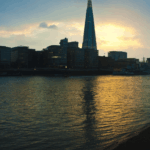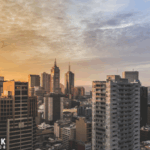The integration of humans and machines in the art world is not only an intriguing concept but also a lived reality for Sougwen Chung, a Chinese-Canadian artist. In a captivating demonstration at the Scorpios Bodrum beach club in Turkey, Chung showcases the potential of robotic collaboration in creating art. This unique blending of technology and creativity poses questions about the future of art and the potential role of machines in it. As the lines between technology and human creativity blur, it becomes increasingly essential to explore the implications of such collaborations.
How is Technology Shaping Art?
Chung’s work with the Drawing Operation Unit Generation 5 (DOUG) represents the evolution of technological tools in art. Unlike traditional methods, this robotic system translates Chung’s movements and data into tangible art forms. The artist’s journey with technology began in 2014 at MIT Media Lab, where they first conceptualized robotic companions for art creation. This innovation allows the exploration of possibilities that transcend human limitations, such as measuring brain waves or visualizing crowd movements.
What Challenges Do Technological Art Forms Face?
Despite the advantages of such technology, it also encounters skepticism and challenges. Some art enthusiasts question the authenticity and value of machine-assisted art. Chung addresses this by highlighting the uniqueness of their approach, which fuses both human insight and machine prowess. The artist emphasizes the necessity of understanding and embracing the imperfections and uncertainties that come with technological systems. This approach encourages a redefinition of artistic boundaries and suggests that machine-made art deserves a place in contemporary discussions.
Chung’s ongoing exploration of human-machine collaboration stems from a background where art and science were not seen as separate paths. Influences from a computer programmer mother and an opera singer father fostered a holistic view of creativity and technology. The artist’s philosophy challenges traditional distinctions and invites audiences to appreciate the blend of digital and manual artistry.
The performance in Turkey was part of the “Evolving Perspectives” exhibition, fostering discussions on the coexistence of humans and technology. Audiences observed the seamless interaction between Chung and their robotic partners, prompting contemplation on the evolving role of artificial intelligence in art. This setting not only provided a platform for artistic expression but also for public engagement and discourse on technological integration.
Examining prior events, discussions about AI and art have often revolved around the potential for technology to replace human creativity. However, Chung’s work argues for a collaborative model where technology becomes an extension of human capability rather than a replacement. This perspective contrasts with earlier fears of redundancy, instead promoting the idea of augmentation and enhancement in creative processes.
At the heart of Chung’s mission is the idea that technology and art are not mutually exclusive. By sharing their process, Chung invites others to reconsider preconceived notions about the role of AI in creativity. As technology continues to advance, it is crucial to maintain a balanced view, recognizing both the potential and the limitations of AI in art. This dialogue is essential for navigating the future of creative expression in a technologically driven world.










